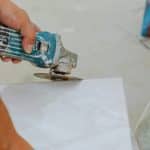When your Range Rover Sport faces the brunt of road mishaps or deteriorates due to age, the sight of paint chips or scratches can be quite distressing. Naturally, ensuring your prized vehicle retains its original charm and sheen is a paramount concern. However, matching your car’s existing paint colour for spot repairs isn’t as daunting a task as it initially seems. Once you know the intricacies and have the proper items at hand, you’ll be well equipped to handle the job like a pro.
Decoding the Paint Code
Before you set out to purchase paint for your Range Rover Sport, it is crucial to understand the significance of the paint code. This code, typically made up of a series of numbers and letters, is the manufacturer’s unique identifier for each colour. It will help you match your car’s paint precisely, ensuring a flawless finish post-repair.
A lire également : How to Install a Performance Throttle Controller for a Quicker Response in a Jeep Gladiator?
You can find the paint code for your vehicle either in the owner’s manual or on a label affixed to the car itself. In most Range Rover Sports, the label is situated in the driver’s side door jamb. Once you’ve located the code, make a note. It will guide you in purchasing the perfect shade of paint for your repairs.
Selecting the Right Product for Your Car
With the paint code in hand, the next step involves selecting the right product for your vehicle. The market offers a plethora of options, from touch-up paint pens to spray cans. Your choice will depend on the extent of damage to your car’s surface.
A lire également : Can Upgraded Piston Rings Extend the Engine Life of a Chevrolet Colorado?
For small chips and scratches, a touch-up paint pen or paint bottle is an ideal choice. These products allow for pinpoint accuracy and are easy to use, even for beginners. However, bear in mind that while touch-up paint pens are efficient for tiny surface blemishes, they aren’t as effective for larger scratches or dents.
If the damage extends to a larger portion of your car’s surface, you’ll likely need to opt for a spray can. It provides a broader coverage area and ensures a more uniform coating. Some spray cans even come with a ‘fan’ nozzle, enabling you to mimic professional spray gun results.
Preparing for Paint Application
Proper preparation is key to achieving a seamless paint finish. Always wash your car thoroughly before commencing any paintwork. Dirt and grime can interfere with the paint adhesion process, resulting in a patchy finish.
Once your car is spotlessly clean, lightly sand the area to be painted. This will help the new paint to adhere properly and blend seamlessly with the existing paint. After sanding, use a clean cloth to wipe away any dust or debris.
It’s worth investing in a good quality primer too. Primer provides a neutral base that can help your new paint to adhere better and last longer. It also aids in achieving a uniform colour match.
Applying the Paint
Whether you’re using a paint pen or a spray can, always remember to shake your product well before use. It helps to mix the colour pigments evenly, ensuring a consistent colour output.
Apply the paint in thin layers, allowing each layer to dry before applying the next. This technique enables the paint to adhere properly and prevents any unsightly ‘drips’ or ‘runs’. For the best results, try to paint in a well-lit, dust-free environment.
Choosing to restore your Range Rover Sport’s original colour is not just about maintaining its aesthetic appeal. It’s also about preserving the value of your vehicle. The right paint, applied correctly, can significantly extend the life of your car’s exterior, making it worthwhile for both the road and the resale.
Price Considerations
While cost should never be the sole deciding factor, it’s still important to consider. Touch-up paint pens, for instance, will generally set you back less than spray cans. However, they offer less coverage and may not provide satisfactory results for larger blemishes.
On the other hand, professional repair kits, complete with primer, paint and clear coat, might offer a more comprehensive solution, albeit at a higher price point. It’s crucial to factor in the severity of the damage, your comfort with the application process, and the finish you desire when determining which product to invest in.
In conclusion, matching your Range Rover Sport’s paint for spot repairs doesn’t need to be an uphill battle. A little knowledge, the right tools, and a touch of patience can transform your Rover from road-weary to road-ready in no time.
Gloss Coating and Buffing to Perfection
After diligently applying the colour matched paint to your Range Rover Sport, it’s essential to give it a coating of high-quality clear coat. The clear coat serves the purpose of protecting the fresh paint and providing a glossy finish that matches the rest of your vehicle. This step goes a long way in ensuring your paint job stands the test of time and harsh weather conditions.
Before applying the clear coat, ensure the paint is completely dry. Once confirmed, follow the same procedure with the clear coat as you did with the paint – apply it in thin, even layers, letting each layer dry before the next one goes on. Typically, two to three coats are sufficient.
Once the clear coat has been appropriately applied and dried, the final step is to buff the freshly painted area. Use a polishing compound and a buffer to gently polish the area. Buffing helps to blend the new paintwork with the existing paint, thereby creating a seamless finish.
Remember, buffing should be done with utmost care. Too much pressure or speed can lead to swirl marks or even burn through the paint and clear coat. Practice on an inconspicuous area if you’re new to buffing before moving on to the freshly painted area.
Maintaining the New Paint
Preserving your Range Rover model after a paint job is as crucial as the paint job itself. The best way to maintain the new paint is by washing your car regularly and carefully. Avoid using harsh detergents or chemicals that can dull or damage the paint. Always use a soft, clean cloth or a sponge to avoid scratching the surface.
It’s also advisable to keep your vehicle out of extreme weather conditions as much as possible. Prolonged exposure to the sun can cause the paint to fade, while heavy rain or snow can lead to paint chipping or peeling.
Every few months, consider applying a quality car wax to the painted surfaces. This not only enhances the shine and lustre of the paint but also creates a protective barrier against dirt, grime, and minor scratches.
In essence, repairing paint chips or scratches on your Rover Range isn’t just about restoring its beauty; it’s also about safeguarding its value. With a little patience and effort, you can handle the task like a professional and keep your Rover Sport looking as good as new.
In Conclusion
In the world of car maintenance, matching paint for spot repairs is an invaluable skill. And when it comes to your Range Rover Sport, it’s about much more than cosmetic appeal. It’s about preserving an iconic driving experience. With the right tools, a clear understanding of the process, and a careful, patient approach, you can ensure your Range Rover Sport remains as remarkable as the day you drove it off the lot. Remember, regular care and maintenance can extend the life of your paint job, keeping your vehicle looking pristine and protecting your investment for years to come. Practice makes perfect, and soon, you may find yourself a master of the art of car paint repair.






